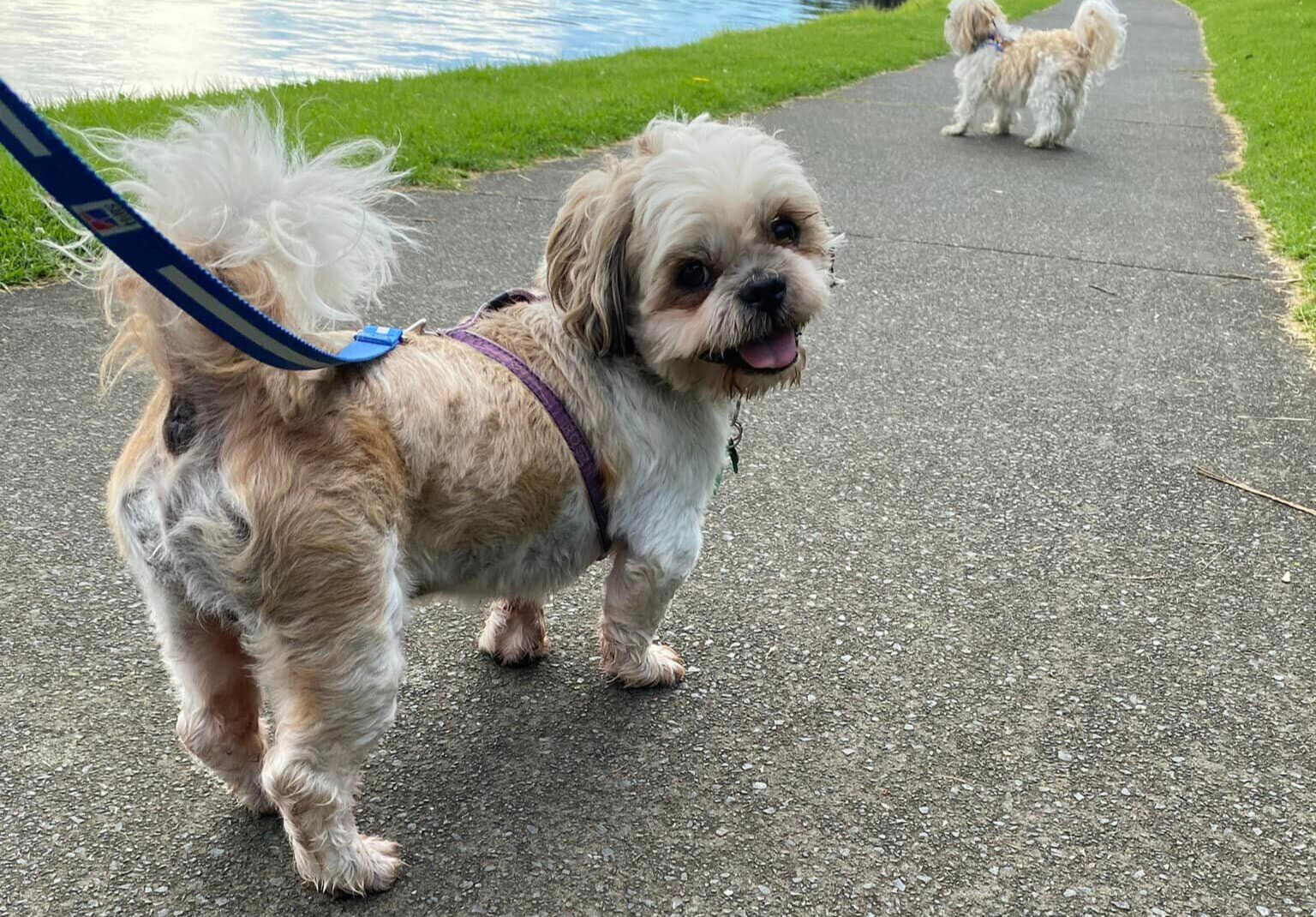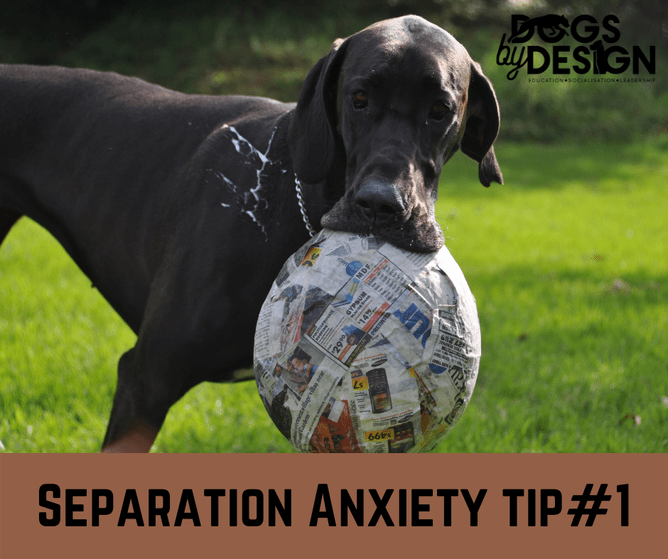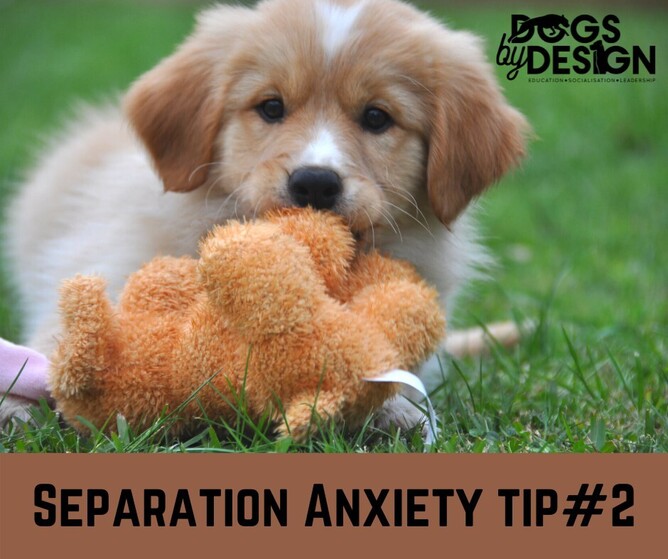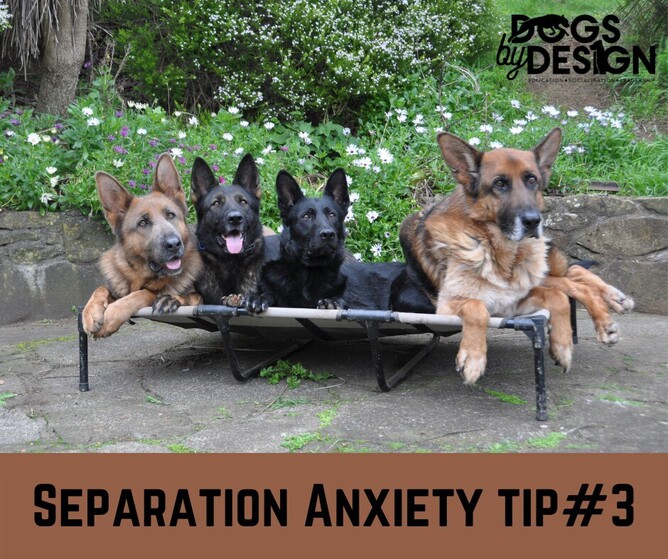Separation anxiety is becoming more common these days, and we are asked for help all the time. We are VERY lucky that the amazing Laura from Dogs By Design has allowed us to share her tips and knowledge on how to combat this.
Laura is an incredible trainer with years of experience in helping "problem" dogs. She also has Live Q+A sessions every Monday on her Facebook Page, so if you want to learn more about all things dog, or talk about your specific issues with your own dog, go and join in!
Separation anxiety comes in a variety of intensities! The most intense, where the dog destroys the location they have been put in and injures themselves, needs professional help ![]()
For the rest of you who have dogs vocalising, pacing, ripping up bedding or chewing random items, this week's tips should certainly help! ![]()
Separation anxiety is almost always a relationship issue between owner and dog and to see positive change, you need to shift the relationship to make it more balanced ![]()
Separation anxiety can be a few different things…![]() A tantrum, because the dog is unimpressed that it has been left out and is not the center of attention - has a “how dare you leave me behind” attitude!
A tantrum, because the dog is unimpressed that it has been left out and is not the center of attention - has a “how dare you leave me behind” attitude!![]() Because the relationship is out of balance the dog believes it is their role to keep their owner safe and that the owner relies on them. So, when the owner leaves, the dog panics and gets distressed because the owner is gone and the dog does not believe the owner can function without them!
Because the relationship is out of balance the dog believes it is their role to keep their owner safe and that the owner relies on them. So, when the owner leaves, the dog panics and gets distressed because the owner is gone and the dog does not believe the owner can function without them!![]() It can be because the dog is sensitive and struggles being away from the pack, this is more common in young puppies and should disappear if the owners do the right things.
It can be because the dog is sensitive and struggles being away from the pack, this is more common in young puppies and should disappear if the owners do the right things.
These ![]() are quite different reasons to what owners think…”He gets sad when I go out”, “he doesn’t feel safe without me there” and so on. These thoughts are not quite true and if you project the energy that comes with those thoughts on your dog, you could make things worse!
are quite different reasons to what owners think…”He gets sad when I go out”, “he doesn’t feel safe without me there” and so on. These thoughts are not quite true and if you project the energy that comes with those thoughts on your dog, you could make things worse! ![]()
You need your dog to start viewing you as a calm and stable leader. If you fulfill the leadership role your dog will be more likely to trust your decision to leave them home and alone. They will also realise that you are more than capable of looking after yourself and that they don’t need to be with you 24/7 to keep you safe! ![]()
How to show leadership? Well we talk about this a lot so I hope many of you will already be aware of how to do this, but there is no harm in repeating the good stuff!! ![]()
![]() Structure, rules, boundaries & limitations, not allowing your dog to do what they want when they want! You decide when to walk them, play with them, pat them, feed them, when it’s time to rest and relax etc.
Structure, rules, boundaries & limitations, not allowing your dog to do what they want when they want! You decide when to walk them, play with them, pat them, feed them, when it’s time to rest and relax etc. ![]()
![]() Respect at thresholds, much like you would expect a person to be respectful. No barging and being oblivious that you are there
Respect at thresholds, much like you would expect a person to be respectful. No barging and being oblivious that you are there ![]()
![]() Respect in your space. Don’t allow invasion of your space unless you invite it. Being jumped on, leaning on, laying on and pawing etc. are all either disrespectful or needy behaviours - you want to reinforce neither!
Respect in your space. Don’t allow invasion of your space unless you invite it. Being jumped on, leaning on, laying on and pawing etc. are all either disrespectful or needy behaviours - you want to reinforce neither! ![]()
![]() Walking calmly next to you on the leash. No sniffing, no stopping and starting, no staring at things. The walk is a great way to bond and can be a powerful way of saying “I’ve got this, I’ll keep you safe, trust me”
Walking calmly next to you on the leash. No sniffing, no stopping and starting, no staring at things. The walk is a great way to bond and can be a powerful way of saying “I’ve got this, I’ll keep you safe, trust me” ![]()
No doting, smothering, babying, codling etc. It’s important owners get a handle on some of their own behaviour, habits and wants when it comes to their dogs. You can give affection but it needs to be balanced out with equal amounts of structure, rules, boundaries and limitations ![]()
This is the first place to start if you want to improve separation anxiety, to be honest it’s where you need to start with any unwanted behaviour! ![]()
.
![]() Does your dog follow you to the toilet?
Does your dog follow you to the toilet?![]() Does your dog follow you to the kitchen when you make coffee?
Does your dog follow you to the kitchen when you make coffee?![]() Is your dog right under your feet when you are working in the kitchen or other area of the house?
Is your dog right under your feet when you are working in the kitchen or other area of the house?
Dogs with separation anxiety will do most, if not all of the above! These things need addressing to change your relationship with your dog and help them learn to be alone ![]()
Teaching and using a “place” command is how I recommend doing this. By not allowing your dog to follow you everywhere and asking them to stay in “place”, you are creating space between you and your dog which is essential!
If your dog can’t sit on “place” while you make dinner or go to the toilet or even while you watch TV in the same room, they are going to struggle even more when you leave the house!
Sometimes it is the simple stuff that can have the biggest impact! ![]()





